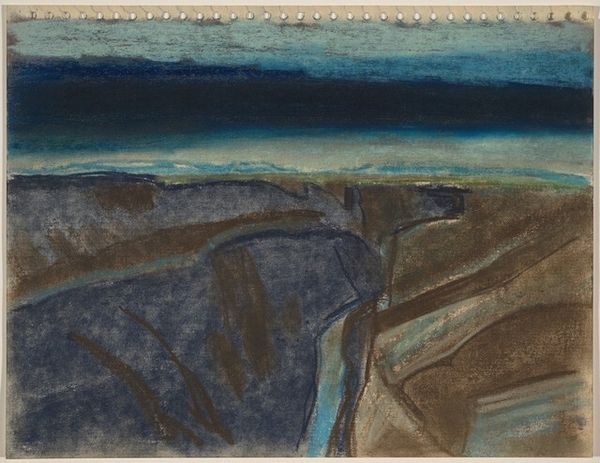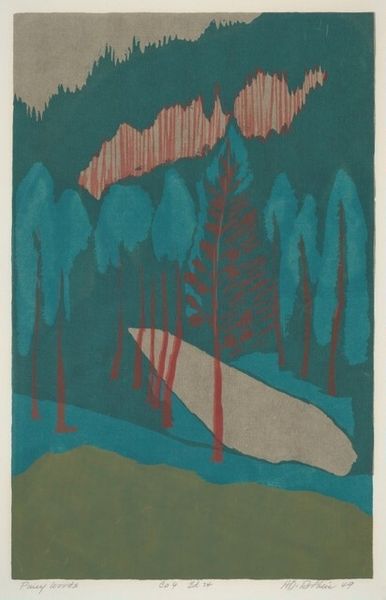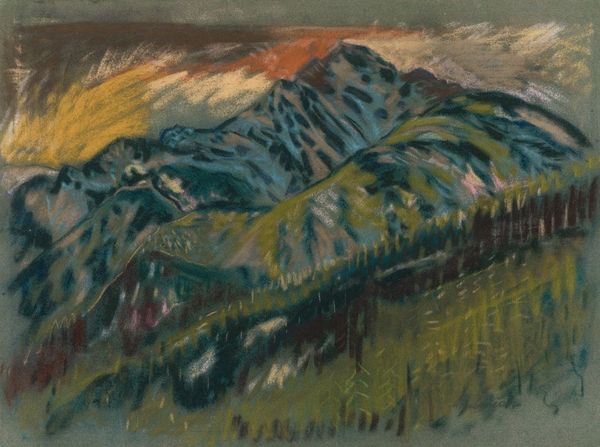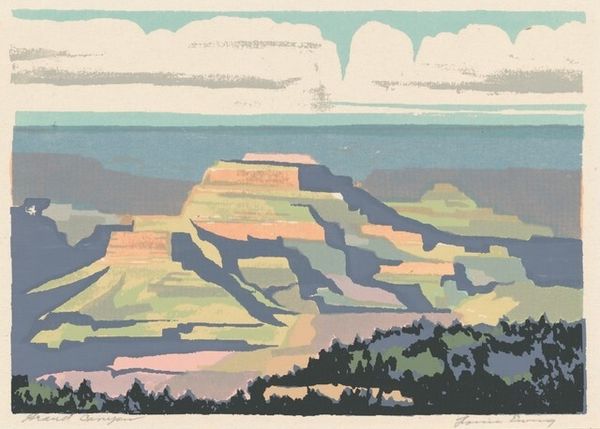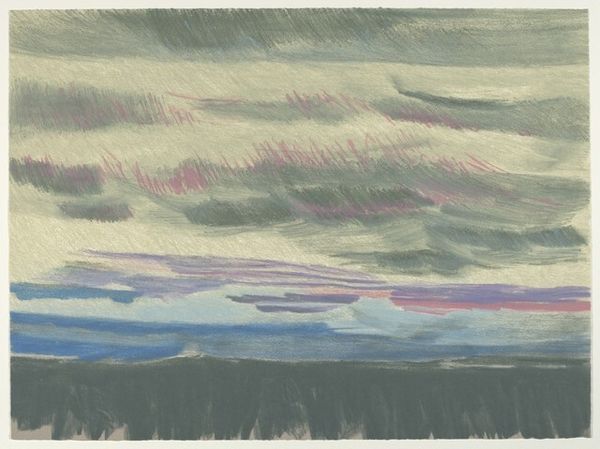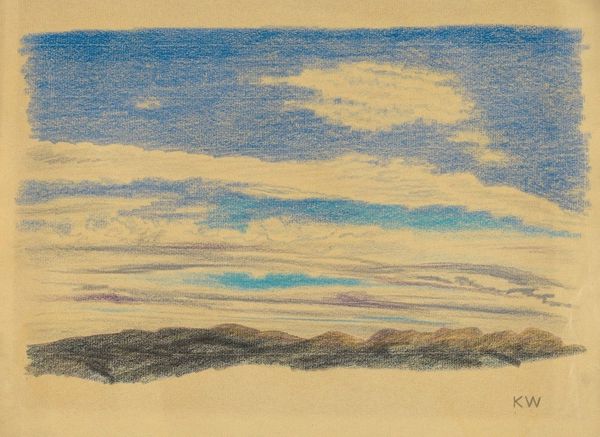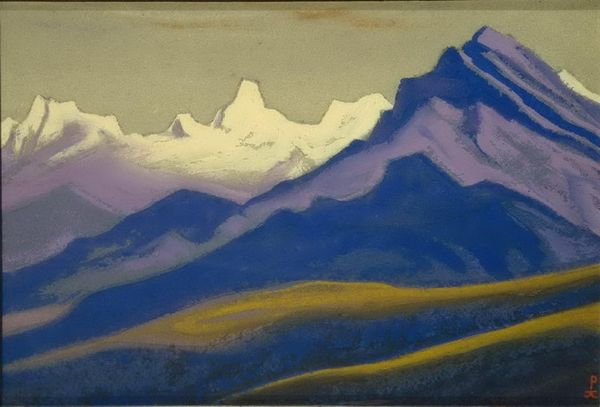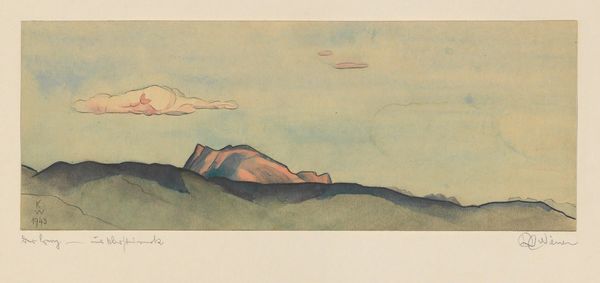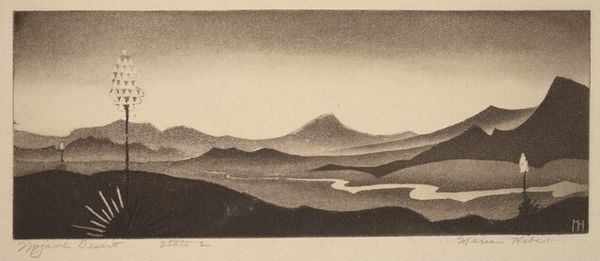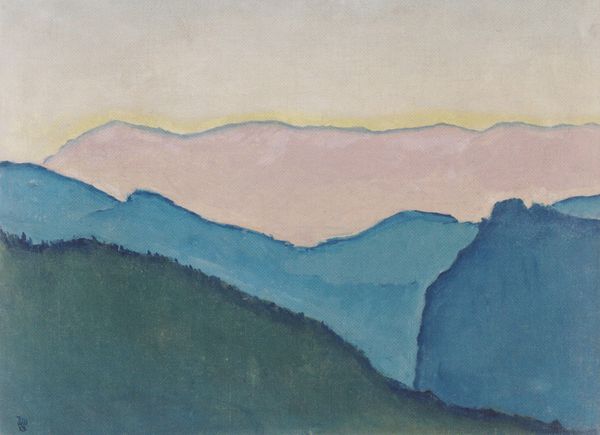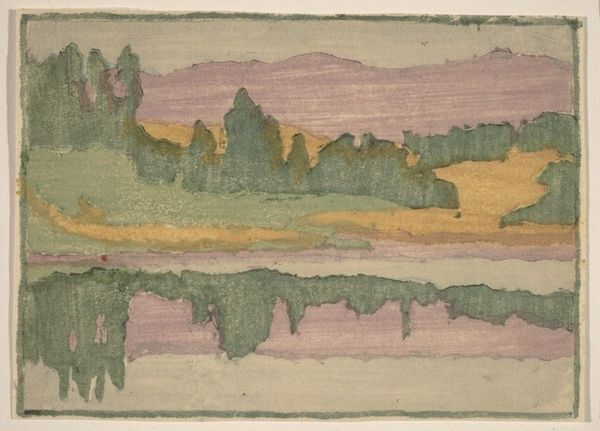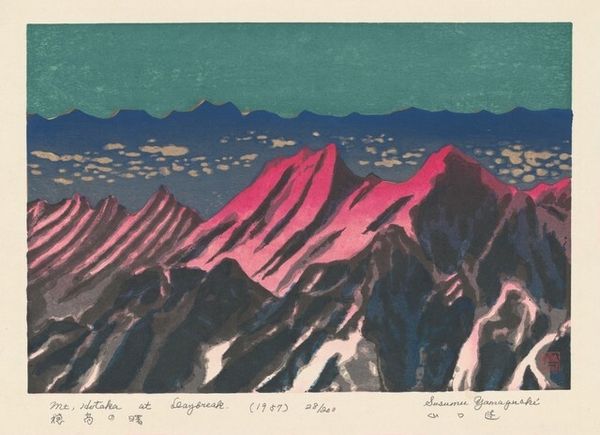
print, watercolor
#
water colours
# print
#
landscape
#
watercolor
Dimensions: image: 279 x 406 mm paper: 318 x 483 mm
Copyright: National Gallery of Art: CC0 1.0
Editor: This is Hulda D. Robbins's "Hidden Path," a watercolor print from 1949. The subdued palette creates a somber, almost foreboding atmosphere, don't you think? What do you see in this piece? Curator: The title, “Hidden Path,” immediately sparks my interest. I see more than just a landscape; I see a coded representation of access and exclusion. The colors are muted, somber, but perhaps reflective of the period’s anxieties or even a personal lament. The "hidden path"—for whom is it hidden, and why? Is this landscape inviting or impenetrable, and for which viewers? What sociopolitical concerns might Robbins be hinting at? Editor: That's an interesting angle. I hadn’t considered that the landscape could be interpreted politically. The title made me think more literally about nature trails. Curator: Right, but we must always look beneath the surface. Who historically has access to land, and who does not? The post-war era saw rapid social changes and challenges to established norms. Robbins, as a female artist, was undoubtedly navigating these shifting landscapes herself, both literally and metaphorically. Is there a connection between the suppression of women artists at the time, and how that's related to ideas around restriction or denied passage? Editor: I see what you mean. Perhaps the ‘hidden path’ alludes to opportunities denied because of one's identity? Curator: Exactly. What appears as a serene landscape becomes a subtle critique. Editor: That gives me a lot to think about, considering the time period and how landscape art might serve as commentary on broader societal issues. Thank you! Curator: And for me, your fresh perspective reminds me how each generation brings new and valuable insights to art historical analysis.
Comments
No comments
Be the first to comment and join the conversation on the ultimate creative platform.
